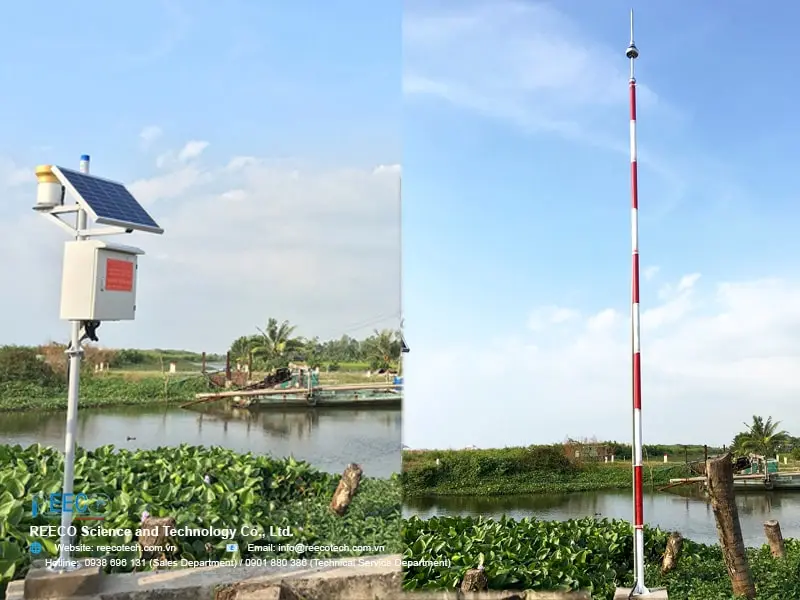National parks serve as sanctuaries, preserving scientific, cultural, and historical values, as well as promoting tourism, education, and sustainable development. Additionally, to ensure the conservation of biodiversity and environmental protection, each national park must have at least one meteorological hydrological monitoring station. So, what are the regulations regarding these stations, including the requirements and technical standards to adhere to, such as placing the stations in appropriate locations for accurately measuring meteorological parameters, conducting regular equipment maintenance, and reporting measurement results as stipulated by the relevant authorities?

Why is it necessary to install meteorological hydrological monitoring stations in national parks?
Establishing meteorological hydrological monitoring stations in national parks is not only a necessary measure to protect ecosystems, support scientific research, and efficiently manage tourism but also plays a crucial role in disaster prevention. Additionally, it contributes to enhancing environmental awareness within the community and educating and raising awareness about the importance of biodiversity conservation.
Below are some reasons why installing meteorological hydrological monitoring stations in national parks is crucial:
Monitoring and conserving ecosystems
- Collecting data on meteorological factors such as rainfall, temperature, humidity, water levels, etc., helps us better understand the living environment of various plant and animal species in the national park.
- Monitoring and early detection of abnormal changes in the environment, thereby implementing effective conservation measures.
- Monitoring the impact of climate change on ecosystems within the national park.
Supporting scientific research
- Providing data for studies on ecology, climate, hydrology, etc., within the national park.
- Assisting scientists in assessing the impact of human activities on the natural environment.
- Supporting research on climate change and adaptation solutions.
Supporting tourism management
- Monitoring and conserving ecosystems
- Collecting data on meteorological factors such as rainfall, temperature, humidity, water levels, etc., helps us better understand the living environment of various plant and animal species in the national park.
- Detecting early abnormal changes in the environment, thereby implementing effective conservation measures.
- Monitoring the impact of climate change on ecosystems within the national park.
- Supporting disaster prevention and response
- Early warning of floods, droughts, wildfires, etc., helps minimize the damage caused by disasters.
- Assisting relevant authorities in implementing effective disaster prevention measures.
- Raising community awareness of disaster risks and prevention methods.
Supporting disaster prevention and response
- Early warning of floods, droughts, wildfires, etc., helps minimize the damage caused by disasters.
- Assisting relevant authorities in implementing effective disaster prevention measures.
- Raising community awareness of disaster risks and prevention methods.
Regulations on installing meteorological hydrological monitoring stations in national parks
The regulations regarding the installation of meteorological hydrological monitoring stations in national parks are highlighted in Circular 30/2018/TT-BTNMT. According to this circular, each national park must have at least one specialized meteorological hydrological station.
Specifically, the minimum meteorological hydrological monitoring requirements for national parks are stipulated as follows: monitoring rainfall, temperature, humidity, wind direction, and wind speed with a frequency of 4 times per day at specific time frames: 01:00, 07:00, 13:00, and 19:00.
When establishing meteorological hydrological monitoring stations in national parks, it is necessary to ensure that the distance between two adjacent stations is within the range of 25 to 30 kilometers and does not exceed 30 kilometers. The density of meteorological hydrological stations within the area of the national park should be maintained at less than or equal to 700 km² per station.
In addition to specialized meteorological hydrological stations, other meteorological hydrological monitoring stations within national parks must also comply with specific density regulations:
- The distance between rain gauge stations within a range of 10 to 15 kilometers applies to areas such as windward slopes, hills, urban areas of type III or higher, and areas with an average annual rainfall of more than 1,600 mm.
The distance between rain gauge stations within a range of 15 to 20 kilometers applies to regions of midlands and deltas.
Meteorological hydrological monitoring stations serving water quantity calculations for reservoirs must also adhere to specific regulations: for river basins or streams supplying water to reservoirs with a total capacity of 500,000 m³ or more, the density of rain gauge station placement is from 10 to 15 kilometers; and for branches of rivers or streams flowing into reservoirs with a basin area of 100 km² or more, one water flow monitoring station should be installed.

Reeco Science and Technology Co., Ltd. provides solutions and equipment for the installation of meteorological and hydrological monitoring stations in national parks. If you have any questions and need detailed information and support, please contact Hotline 0938 696 131.

